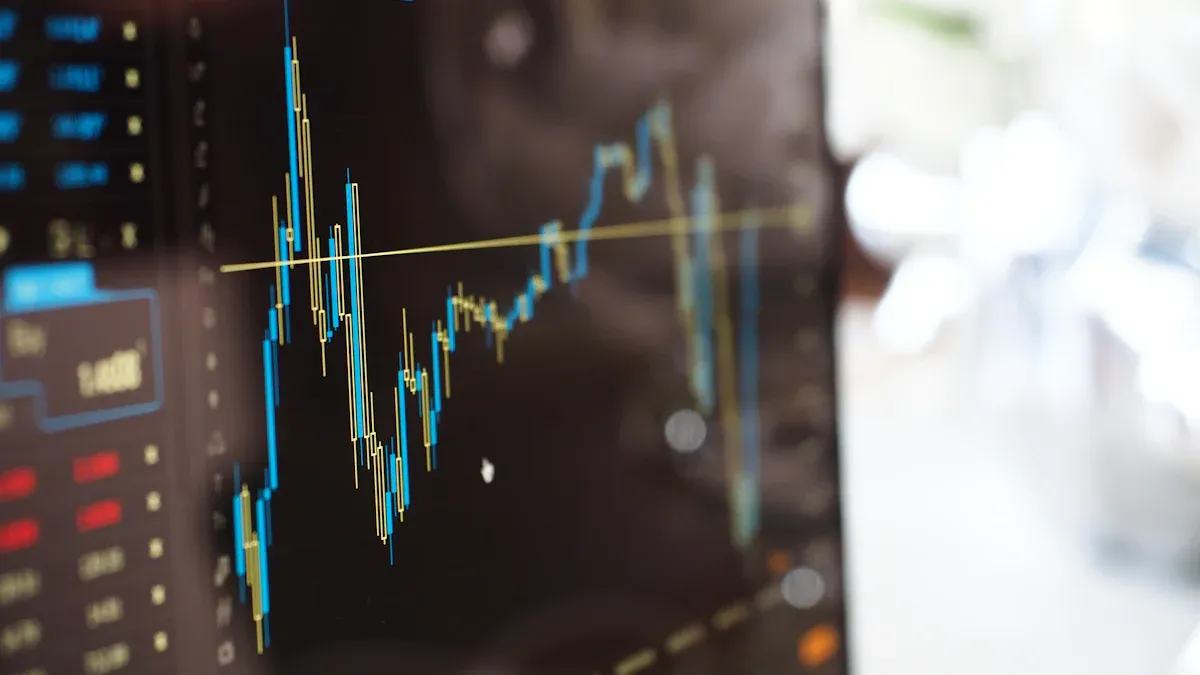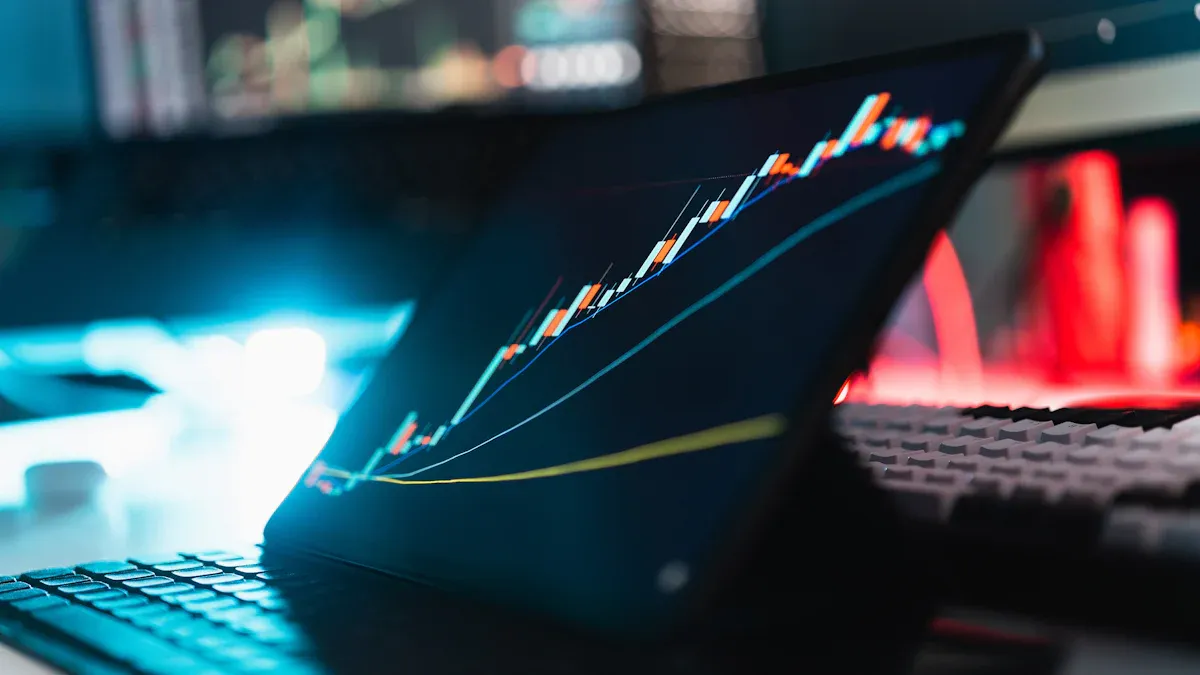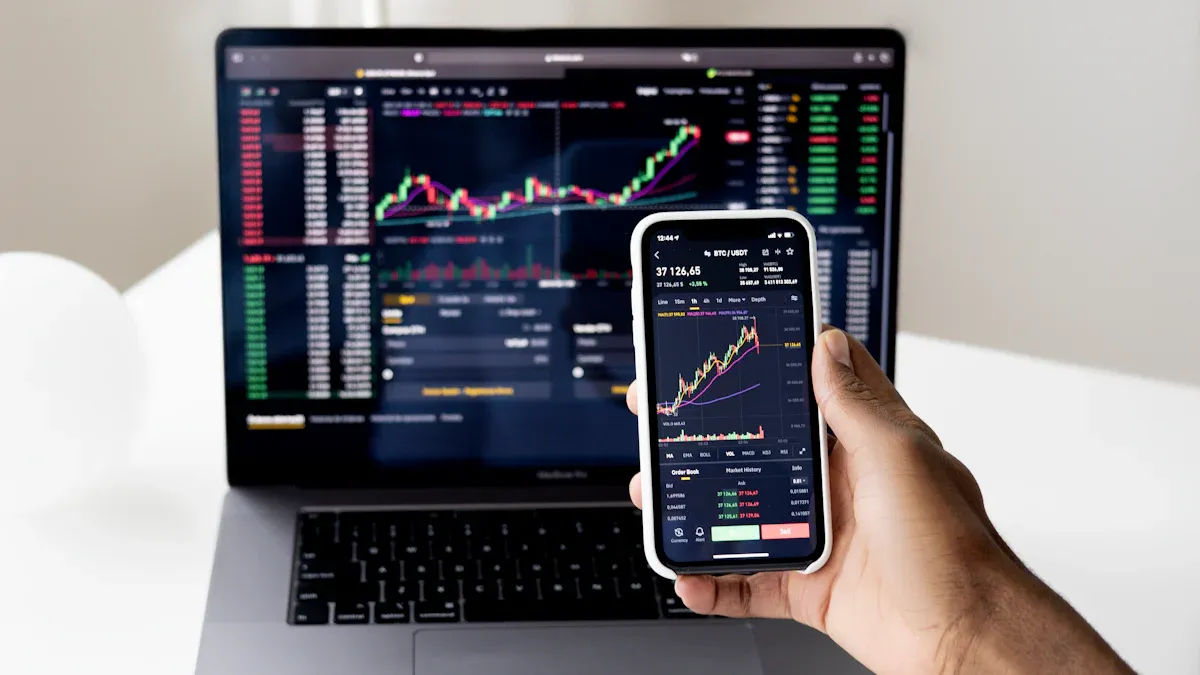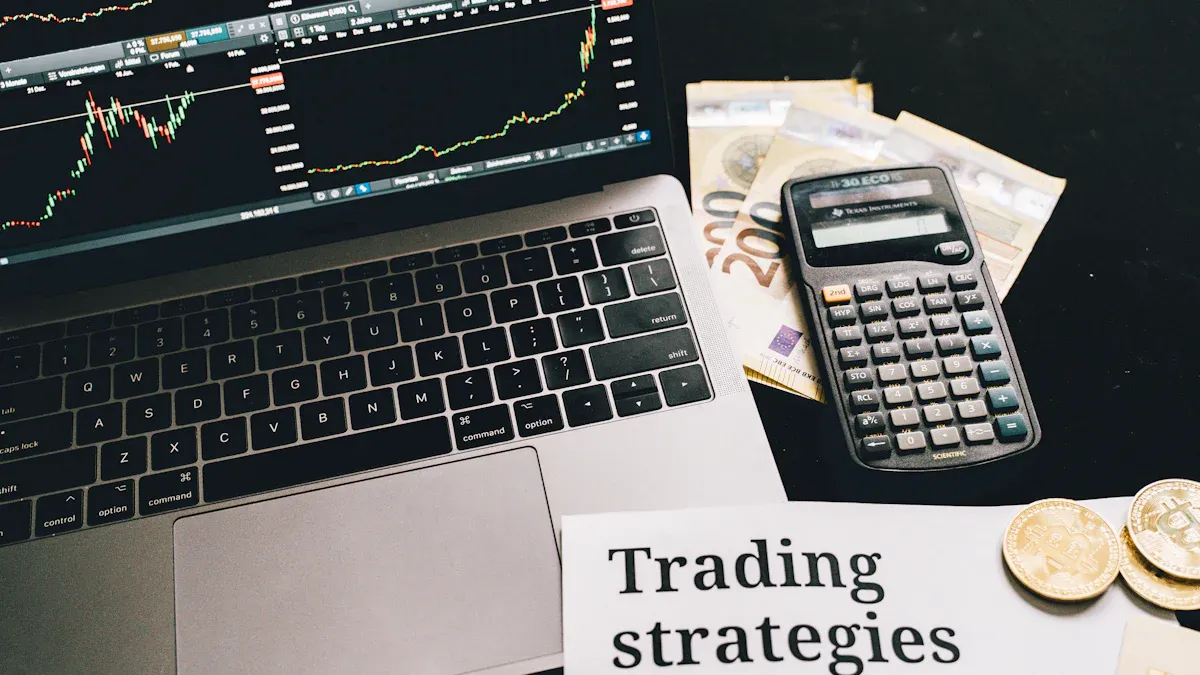Image Source: pexels
You are witnessing significant changes in money due to digital tools, particularly highlighted in the context of ‘Digital Assets and the Virtual Economy: Emerging Trends in Finance.’ More companies are now utilizing cryptocurrencies, NFTs, and DeFi platforms, with about 94% recognizing their value for the future. Blockchain technology enhances transaction transparency and security. Additionally, stablecoins and virtual money are transforming global trade. Understanding these emerging trends is essential for success in this new financial landscape.
Key Takeaways
- Digital assets like crypto and NFTs are changing money systems. Learning about them helps you understand the modern economy.
- Buying virtual land can make money, but check the platform’s use and tech before buying.
- Banks are using digital assets by making new tools and teaming up with tech companies to stay ahead.
The Rise of Digital Assets
Cryptocurrencies and Their Growing Adoption
Cryptocurrencies are now a big part of modern money. Many industries are using them more for different reasons. Companies like MicroStrategy and MetaPlanet have spent a lot on Bitcoin. This has inspired other big investors to do the same. Smartphones and the internet make cryptocurrencies easier to use. People can now trade digital money on many platforms. More traders are leaving regular stock markets for cryptocurrencies. They hope to earn more money with these. The global pandemic made this shift happen faster. Many turned to online money options during that time.
The Role of NFTs in Digital Ownership
NFTs have changed how we think about owning things online. Some examples show how important they are. Beeple’s digital art, "Everydays: The First 5000 Days," sold for $69 million. William Shatner’s NFT items sold 125,000 pieces in nine minutes. Platforms like NBA Top Shot and CryptoKitties are also very popular. NFTs let people safely buy, sell, and trade digital items. They are now a key part of the online economy.
Tokenization and Decentralized Finance (DeFi)
Tokenization is changing how we handle money by turning assets into digital tokens. This makes trading and managing them easier. DeFi platforms are growing because they fix problems in old systems. Tokenization connects real-world assets to DeFi, making trading faster and creating new ways to invest. For example, Hong Kong used tokenization to issue a green bond. Big companies like Goldman Sachs and Blackrock are also using tokenized assets. This trend is helping finance become more digital. It also gives more people access to global markets and financial services.
The Virtual Economy and Metaverse

Image Source: pexels
Virtual Worlds as Economic Hubs
Virtual worlds are becoming places for business, fun, and socializing. Platforms like Decentraland and Roblox let users make, trade, and sell digital items. These spaces are not just for games anymore. They are now markets for products and services. Companies use these platforms to find new customers and build their online presence. For instance, big brands like Gucci and Nike have opened virtual stores. They sell special items to users in these worlds. Joining these virtual economies can help you discover new ways to grow and create.
Digital Currencies in the Metaverse
Digital currencies are important for buying and selling in the metaverse. Cryptocurrencies like Ethereum and tokens like MANA and SAND make trading easy. You can use them to buy items, pay for services, or invest in digital goods. These currencies work on decentralized systems, making them safe and clear. As the metaverse grows, more people want to use these currencies. By using them, you can join a global economy without borders.
Investment Opportunities in Virtual Real Estate
Buying virtual land can be a good investment, but it has risks. Virtual land can become more valuable if demand increases and supply stays low. You can earn money by renting it, hosting events, or building attractions. Businesses also use virtual land for ads and connecting with customers in new ways. But the market can change quickly due to technology or rules. If the platform becomes less popular, your land might lose value. Even with these risks, the fast growth of the metaverse makes virtual land an exciting choice for smart investors.
💡 Tip: Before buying virtual land, check the platform’s popularity, technology, and future potential.
Regulatory and Security Challenges
Changing Rules for Digital Assets
The rules for digital assets are changing fast. Governments are updating laws to match this new money system. Big issues include token disputes and smart contract rules. Countries like the US, UK, Singapore, and Australia are leading these changes. By 2025, new rules may explain what groups like the SEC and CFTC can do.
Digital assets bring tricky rule-making problems for many reasons. One big reason is blockchain’s design. It lets people trade directly without middlemen. Blockchain creates new types of assets that don’t fit old rules. These assets may act like regular ones but need new laws.
Privacy and Safety in the Virtual World
The virtual world has new risks for your privacy and safety. Blockchain is secure but not perfect. Hackers attack wallets, exchanges, and online platforms. Virtual worlds also store personal and money details, which can be stolen. Use platforms with strong security and two-step logins to stay safe.
Protecting Users While Supporting New Ideas
Keeping users safe while allowing new ideas is tough. Regulators want to support tech growth but stop scams. Clear rules help protect your money without slowing progress. Working together, leaders and regulators can build a safe and exciting money system.
Integration with Traditional Finance
How Banks Are Adapting to Digital Assets
Banks are changing how they work to include digital assets. Here’s how they are doing it:
- Big banks are creating their own tools like digital wallets.
- Smaller banks team up with tech companies for faster solutions.
- Banks check if they have the right tools and skilled workers.
- Strong rules and safety measures are set to protect operations.
- Partnerships help banks improve and grow in digital finance.
These steps show how banks are staying competitive in digital finance.
The Rise of Hybrid Financial Models
Hybrid models mix old and new ways of handling money. For example, businesses can get funds by sharing future earnings. Banks use blockchain to make their work cheaper and clearer.
Some businesses use both traditional and digital finance for flexibility. They may keep a regular bank account for safety and use DeFi for quick, cheap transfers. Others split their money between stable DeFi investments and savings accounts. These models mix safety with new ideas, making them useful for many people.
Collaboration Between Fintech and Traditional Institutions
Fintech companies and banks are teaming up to create new ideas. BBVA and Anthemis work together to build fintech startups. Wells Fargo helps fintech projects through its Startup Accelerator. Santander uses Ripple’s blockchain to make faster money transfers.
Other examples include Centime working with First National Bank of Omaha. They added AI tools to help manage money better. These partnerships show how fintech and banks combine strengths to improve financial services.
Future Trends and Opportunities
AI-Driven Financial Solutions
Artificial intelligence (AI) is changing how money systems work. It helps make things faster and easier for users. Here are some ways AI is used:
- Personalized Services: AI studies data to give you custom money advice. It helps you plan budgets and investments better.
- Credit Risk Assessment: AI checks data to see if someone can repay loans. This helps lenders avoid risks.
- Algorithmic Trading: AI picks the best trades and handles them quickly. This helps people earn more money.
- Customer Support: AI chatbots answer questions anytime, making help always available.
- Compliance and Security: AI watches for bad activities like money laundering. It also helps with following rules.
Banks and companies are spending more on AI tools. These tools make work faster and customers happier. Using AI also helps businesses grow and stay ahead of others.
The Potential of Universal Digital Currencies
Universal digital currencies could change how the world trades and shares money. They make sending money across countries faster, taking just seconds. This is great for small businesses, helping them with money problems. These currencies also lower costs for risky countries, solving some big issues.
But there are problems too. Some places don’t have the technology to use these currencies. People also worry about how they might affect investments and money rules. Even with these challenges, universal digital currencies could make trading fairer for everyone.
💡 Note: Teaching people about digital currencies and building trust is very important.
Expanding Access to Financial Services Globally
Digital assets are helping more people use money services, especially in poor areas. Blockchain technology makes sending money safe and cheap. It also removes the need for middlemen. This helps people in remote places open accounts and use affordable services.
For example, mobile money in Bangladesh made sending money home easier. Families spent 7.5% more on daily needs. In Mozambique, similar programs helped families spend 35.2% more and find better jobs. These examples show how digital tools can grow economies and improve lives.
🌍 Tip: Making money tools simple can help more people use them.
Digital assets are changing how money works. They make trading faster and easier. Tokenization helps cut costs and avoid payment problems. Projects like Evergreen and Goldman Sachs show how this works. But rules for digital assets are still unclear. Blockchain is global, and assets don’t fit old rules. Learning and staying flexible can help you succeed in this new system.
FAQ
What are digital assets, and why do they matter?
Digital assets are things like cryptocurrencies, NFTs, and tokenized items. They make trading faster, ownership shared, and money usable worldwide. These tools are changing how we use financial systems.
How can you begin investing in virtual land?
Look into platforms like Decentraland or The Sandbox. Check how popular they are, their technology, and future plans. Start with small amounts to lower risks while learning about this new market.
Are digital currencies safe to use?
Digital currencies use blockchain to stay secure. But there are dangers like hacking and scams. Use reliable platforms, turn on two-step logins, and learn safety tips.
💡 Tip: Always check if platforms are trustworthy before buying digital assets.




